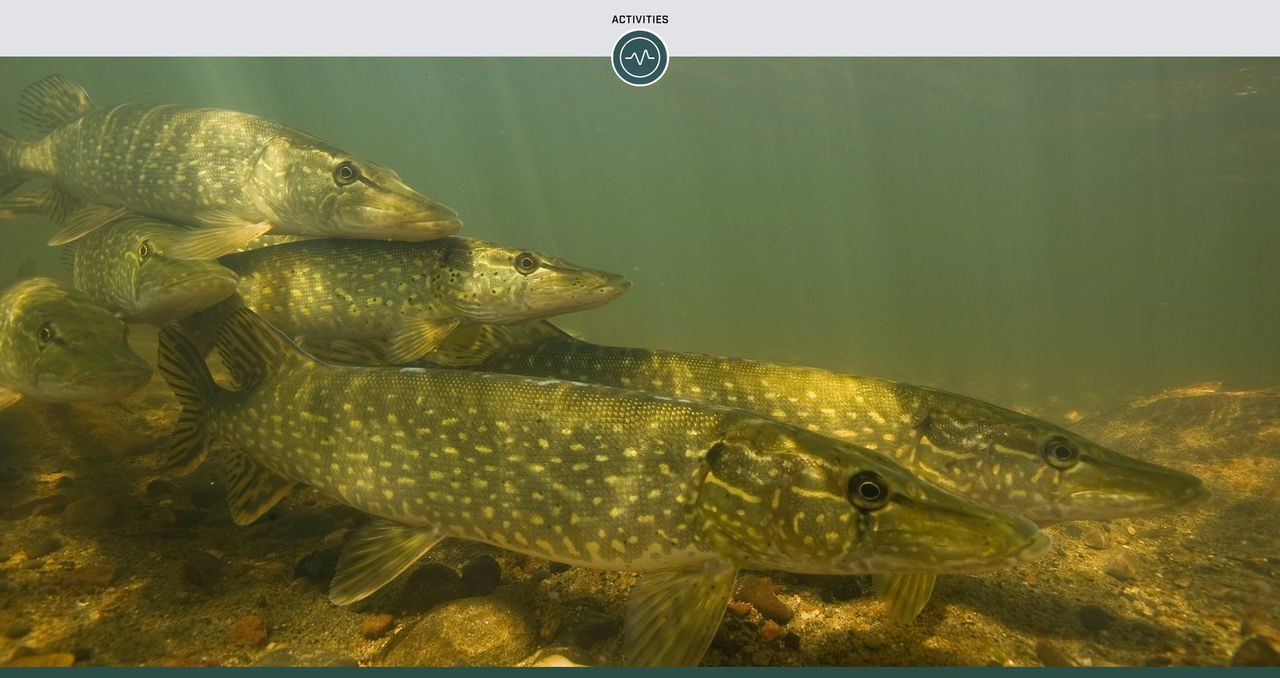This blog is by Mercury Pro Team member Jeremy Smith, one of the hosts of “Lindner’s Angling Edge” and a renowned multi-species angler based in Minnesota.
Growing up in the North Country, many anglers develop a fascination with northern pike at an early age. For some, hearing stories of the size and aggressive tendencies of pike garners interest. For a lot of young anglers, it’s simply their teeth! One look at those chompers, and it’s easy to imagine a pike’s presence must strike terror in its prey.
Historically, pike were large in size and low in number in many waters. However, in many places in the northern U.S., northern pike have become a nuisance fish. For instance, they are contributing to stunted panfish populations and lower-density walleye fisheries. Many of our Midwest pike fisheries have populations with many small fish, a few medium fish – and rarely a big fish.
That said, with change comes opportunity. High-density pike fisheries provide intense action and generous harvest regulations. In waters that still grow big pike, new regulations are coming into effect to maintain trophy opportunities.
Let’s dive into pike waters and explore where they go throughout the season.
Spring – Look Shallow
Spawning pike are an early indicator of spring. They arrive in shallow weedy bays, creeks and ditches as the spring melt begins to flow. Lakes are still covered in ice in many cases, but sloughs and ditches with open water attract pike.
Canada is famous for its spring pike fishing, for good reason. Significant numbers of giant fish can move into shallow waters. Shallow pike can be skittish. This is when fly-fishing, fishing soft plastics and jerkbaits shine. The key with using artificials is having lures that can pause and suspend in the water.
Another popular technique, especially in the Dakotas, is to fish dead bait. Anchor up or sit onshore at the back ends of bays and creek mouths. Soak dead ciscoes or suckers on the bottom or under a float. It’s incredible how effective this technique can be, and it often produces larger pike than fishing with artificials.
Summer – Move to Deep Structure and Weeds
Warming water moves pike from shallow bays to deeper weeds and rocks with cooler water. Big pike prefer cool water, and this most often dictates their location. In June, lush weed beds produce some excellent action for pike. Throwing spinnerbaits or spoons in the weeds is a traditional means of catching them.
As summer progresses, big pike often suspend near 25- to 35-foot-deep structures adjacent to deep water. This time of year, big pike are almost always near deep water, while smaller pike may remain in the weeds. Jigs and soft plastics are the most versatile tools for fishing deep weed beds and deeper structures.
Fall – Follow the Baitfish
It’s no secret that fall is time for big fish. Cooling waters push shallow baitfish deep, and cold-water species such as ciscoes (also referred to as tullibees or lake herring) can now return to the shallows. Edges of large weed flats that intersect with deep basins are ideal hunting locations for pike. Big fish love rocks in the fall as well. Reefs and points with giant boulders in 4 to 15 feet are great.
Top casting presentations are dive-and-rise jerkbaits, mid-size crankbaits and erratic jerkbaits, including Suicks, Rapala Super Shad Raps and Rapala X-Raps. Big soft plastics are great as well. Fall is also when flat-line trolling crankbaits is at its best. Banging crankbaits off rocks and trolling at 3 to 4 mph accounts for many fish over 40 inches each season.
Winter – Find the Weeds
Being a cool-water fish, pike are very active through the ice. They can be anywhere this time of year, but weed beds are great locations to find numbers of them once again. In most states, multiple lines are allowed for ice fishing. Setting a spread of tip-ups is a fun way to get kids or a group of people out on the ice for some easy action.
No doubt, pike will bite lures, but live or dead bait is undoubtedly the most effective presentation. There is still potential for trophy pike through the ice, and it’s also a great time of year to fill a bucket with hammer handles and pickle some pike. It’s fun and delicious.
As the circle comes around, late winter back to early spring is likely the best opportunity for finding the largest concentrations of big fish. Areas adjacent to shallow spawning locations can stack up big pike, and set lines with live or dead bait produce giants.
Get After Pike Anytime You Can
This is a broad view of where pike are found and how to catch them throughout the seasons. Obviously, there’s a lot more to it, and each outing is different.
Bottom line: Northern pike are a plentiful resource for a fish fry or the pickle jar. And the trophies can be the biggest species of fish swimming in many waters. Pike are easy-to-catch fish, taste delicious, fight hard and grow to trophy proportions. They may be worth a little more of your attention on the next outing.




